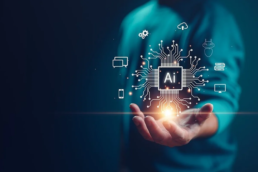A seismic shift is underway in artificial intelligence, as new techniques like DALL-E, GPT-3 and AlphaFold exhibit the emerging ability to autonomously generate creative artifacts like images, text, 3D models and music rather than just analyze data. This novel capacity for machine creativity holds immense possibility but also risks if not thoughtfully governed. Business leaders have a profound opportunity to shape this technology toward expanding human imagination rather than replacing it.
Defining the Rise of Creative AI
A paradigm change is occurring in AI, from purely reactive pattern recognition to proactive generative creation. Technologies like DALL-E 2 demonstrate the rising potential to produce completely novel artifacts – text, art, voices, video – algorithmically rather than just labeling inputs.
By synthesizing new data rather than just categorizing existing patterns, these generative models unlock exponentially greater possibilities compared to previous AI. Their creative scale is restrained only by available training data, computing power, and our ingenuity in directing them.
Key techniques powering this change include:
- Generative text – algorithms like GPT-3 creating coherent written content from raw inputs.
- Generative images – neural networks like DALL-E 2 producing original images and artworks from text prompts.
- Generative voices – advanced speech synthesis replicating natural vocal inflections and tones.
- Generative 3D/CAD – AI automatically designing intricate 3D objects and structures from specifications.
- Generative video – tools synthesizing short films from textual descriptions of required scenes.
- Generative music – algorithms composing instrumental melodies and tracks tailored to defined genres, moods and instruments.
- Generative code – AI authoring simple but functional software programs from parameters.
By artificially conjuring new concepts rather than just recognizing patterns in data, these models enable exponentially greater creative applications.
High-Potential Applications Across Sectors
Guided ethically, creatively generative AI could reinvent numerous domains:
- Automated Document Drafting: AI instantly produces customized sales proposals, reports, product descriptions and more tailored to themes.
- Data Visualization: Humanizes insights through automatically generated charts, graphs, and dashboards.
- Interactive Product Customization: Consumers specify preferences and receive AI-generated visuals of personalized options.
- Video/Animation Production: Automates creation of marketing explainers, tutorials, advertisements adapted to target audiences.
- Voice Assistant Personalization: Generates voices with customizable natural inflections tailored to brand personas.
- Architecture/Design Prototyping: Quickly creates 3D models, architectural renders, app/product wireframes and mockups.
- Creative Workflow Augmentation: Smart assistants analyze data, summarize documents, moderate content and handle simple requests.
The paradigm shift is leveraging AI’s creative scale while preserving human discretion over final published outputs.
The Need for Principled Governance
However, as with any transformative capability, responsible governance and prudent risk mitigation remain critical:
- Output Quality: Monitor for false information, harmful biases and plagiarism requiring review and editing.
- Information Security: Scrub confidential data from inputs to prevent exposure through generative outputs.
- Legal Compliance: Navigate complex regulations around data rights, content usage and disclosures.
- Job Impacts: Provide transition support to creatives displaced by automation across industries.
- Ethical Risks: Safeguard against potential dehumanization, emotional manipulation, and lack of transparency.
- Overreliance: Maintain appropriate human judgment and control. Don’t let pursuit of efficiency erode human ethics and discretion.
With diligent mitigation guided by moral wisdom and care, the abundant potential of machine creativity can be cultivated for the benefit of all.
Architecting an Ethical Integration Framework
Principled approaches for adopting creative AI include:
- Maintaining Human Stewardship: Humans direct AI creativity based on values, AI generates possibilities. Balance benefits of automation with human accountability over distribution.
- Reviewing Outputs: Manual checks by humans before publication to verify quality, accuracy and ethics. Do not fully automate end-to-end.
- Enabling Transparency: Systems reveal how they craft generative outputs to build public trust through explainability.
- Implementing Access Guardrails: Usage guidelines aligned with ethics to constrain generations based on audience, accuracy, tone and appropriateness.
- Securing Data: Scrub confidential info from training inputs. Follow strict access controls for data and models.
- Disclosing AI Sources: Label generative content appropriately by denoting source where relevant.
- Monitoring Continuously: Rapid iteration and refinement driven by spot checks for issues like plagiarism or toxicity.
- Embedding Ethics by Design: Incorporate impact assessments, oversight and values alignment from the start.
With careful implementation, we can realize tremendous new possibilities for human creativity, productivity and knowledge – but do so thoughtfully. Our choices today will shape this technology’s trajectory for generations. The time for principled leadership is now.




